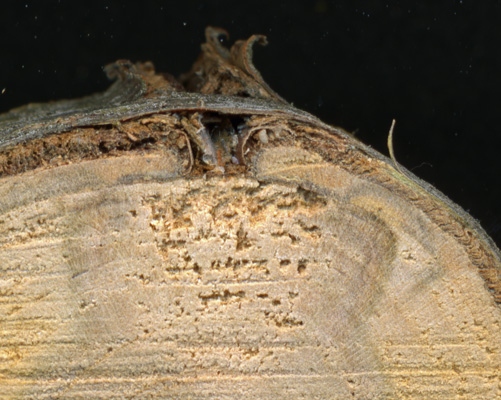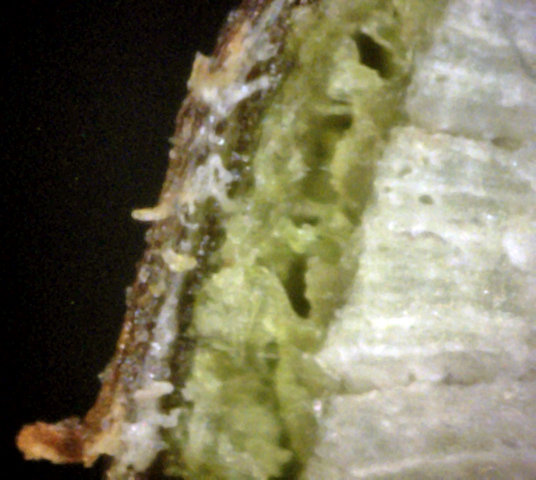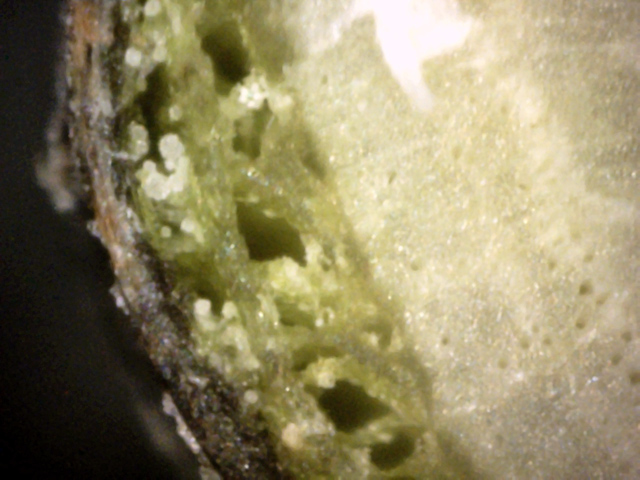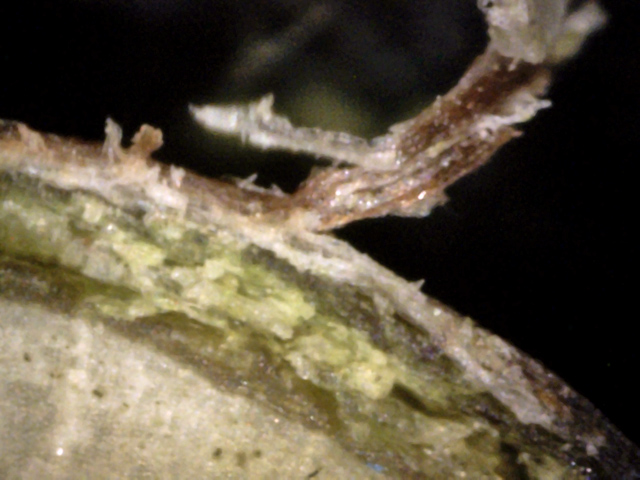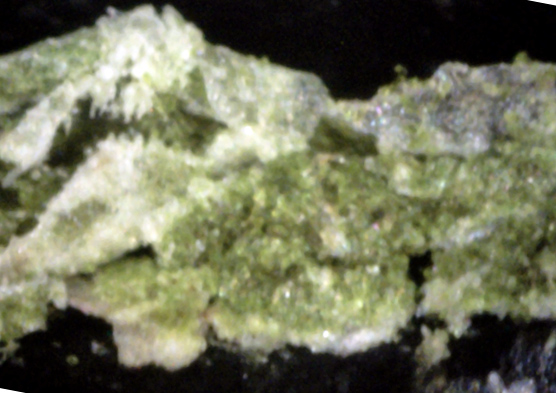While doing some heavy pruning of a Chokecherry tree, I uncovered more symptoms of white canker.
This tree had become infected several years ago.
One common symptom of white canker is fissures in the bark.
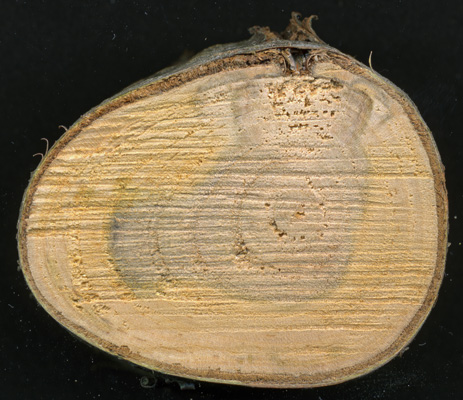
1
This branch cross-section is about 2 inches thick and is about 7 years old.
The saw blade cut very close to (but not through) one of these fissures.
Note specifically that the fissure continues under the bark!
The diseased wood at the center is dark in color, and shows that the disease came up through
the core of the wood and spread outward.
The disease expanded to the bark in the upper part of the picture, where it killed the inner bark.
The holes in the wood, centered in the diseased area, were created where the saw blade pulled
out wood weakened by disease.
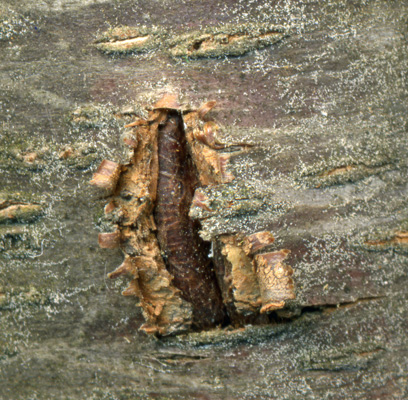
3
This is a high-resolution scanner picture looking directly at the bark fissure.
Apparently the tree sensed that its inner bark was being killed and then initiated the growth of wound wood.
However, unlike a physical injury, the outer bark was still intact.
The pressure of the new wound wood growth then ruptured the bark, giving it the appearance of an explosion.
Look carefully at the bark around the fissure in the picture (click it to zoom in).
You can just barely see that the bark surface is covered with a huge number of light yellow or tan spores.
This tree disease is primed to spread itself via wind and rain to many other shrubs and trees!
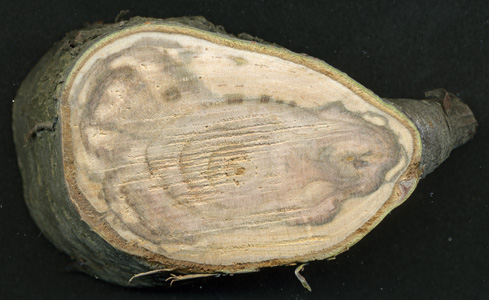
4
This is a sanded cross-section of another infected branch.
The advancing black infection fronts are easily seen.
Note that where these infection fronts hit the inner bark, that bark appears thicker.
It really isnít.
Instead, the green and life sustaining phloem has been killed there (you can see it if you look carefully).
This branch is about 40% dead based upon the size of the phloem thickness.
Eventually, all the phloem will die and then the leaves will dry up and also die.
As the leaves starve, opportunistic infections may move in.
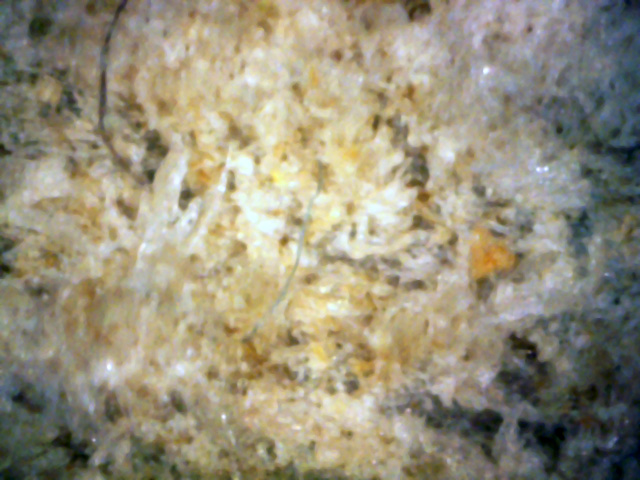
5
This is a microscopic view of the area shown in picture 4.
If you look carefully, you can see the semi-transparent hyphae,
and the damage they have done to the wood.
While the earlier pictures were taken in late May, the following set of twig and leaf pictures
were taken in late September.
At this time the white canker had already reproduced by shedding it's spores.
Hence, spores were hard to find.
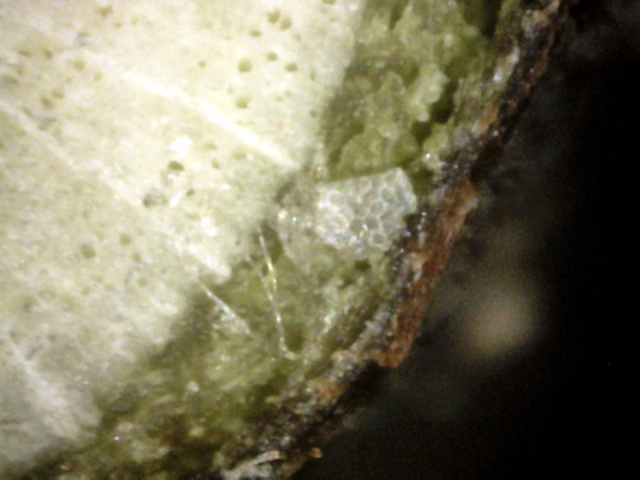 ↓
←
↓
←
8
A large chunk of frothy white canker (red arrow). The frothy texture was
probably caused by a razor cut through it. A hypha grows to the lower-left of
it. Note that the green sapwood is splitting due to canker growth (blue arrow).
(400x)
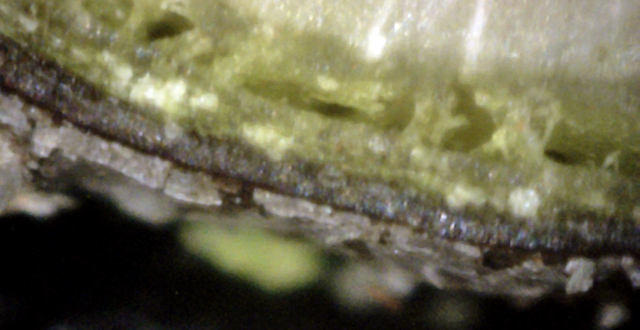
9
A good example of a cut through a layer of ice-like white canker growing on the surface of the bark.
There are also spores under the bark. (400x)
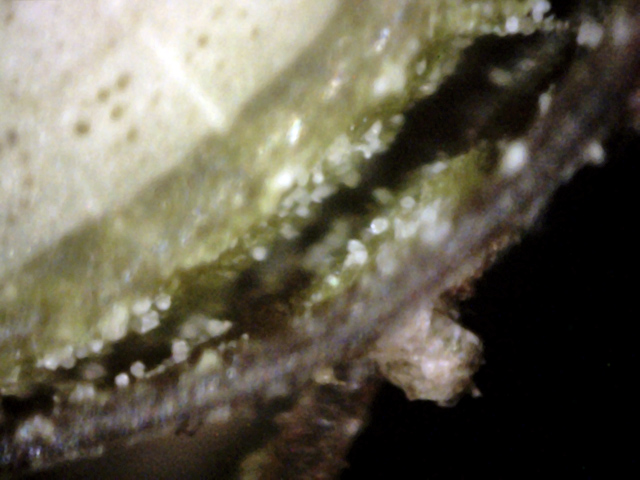
11
This area was under such severe attack from canker particles that it caused
a huge void between the sapwood and the bark. (400x)
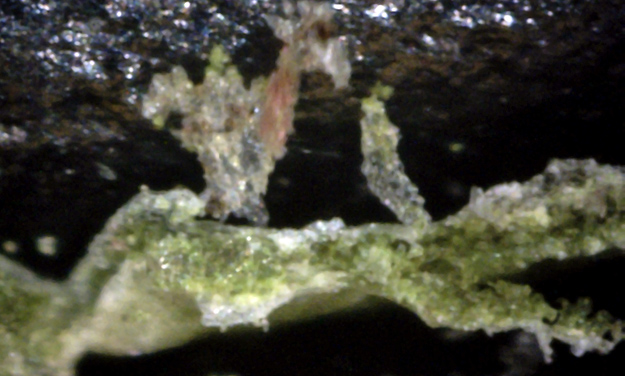
12
It appears that white canker engulfed the surface leaf cells and absorbed them.
Possibly, as these leaf cells die, they turn brown, and then become transparent? (400x)
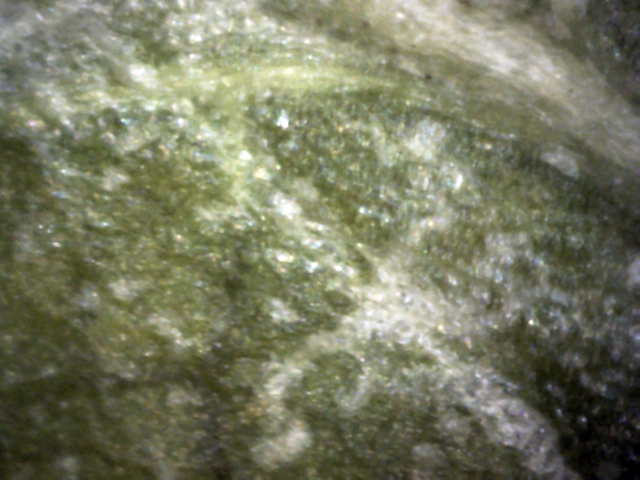
13
This the upper leaf surface.
It's a good view of how the white canker within the leaf is spreading out within the leaf interior. (400x)
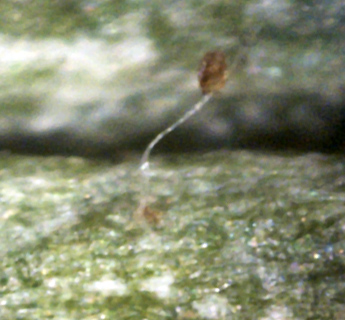
14
While examining the leaf surface, I found this hypha with an attached young spore.
These two objects usually aren't so openly visible. (400x)
